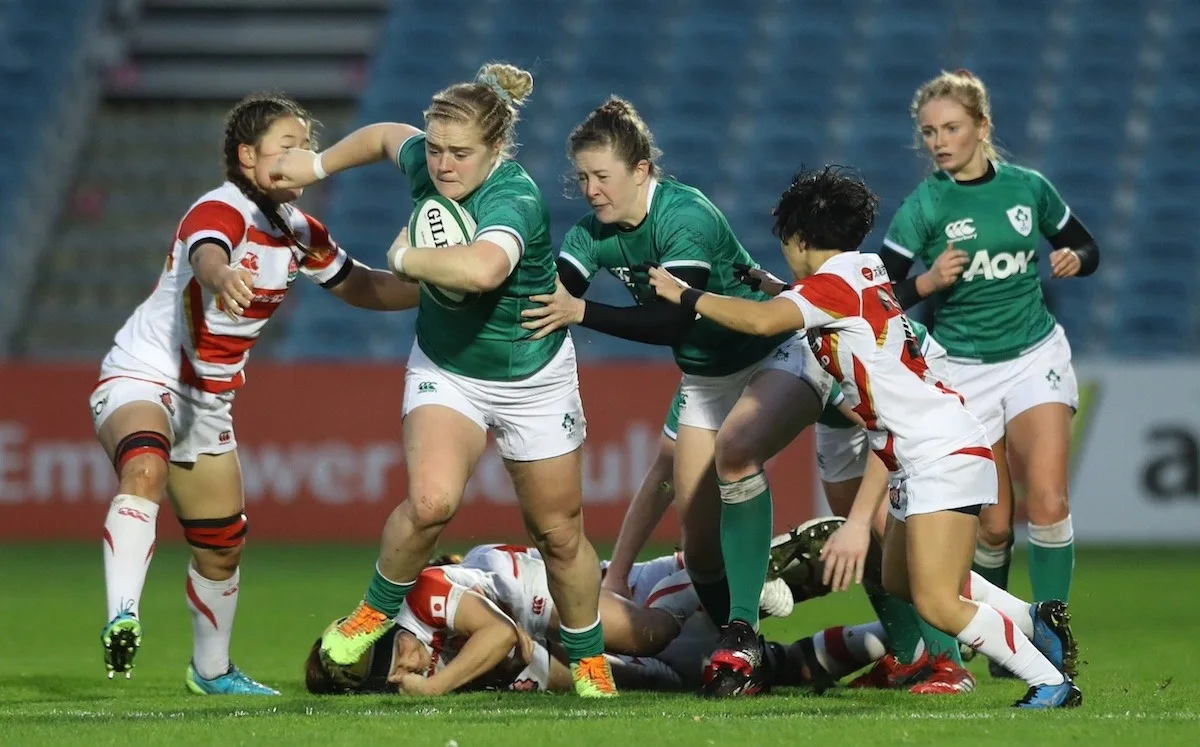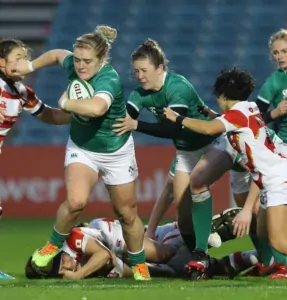Rugby, a sport characterized by its blend of physical prowess and tactical genius, thrives on the collective symphony of its players. At the heart of this symphony lies the art of alignment and spacing in attack, a facet as crucial as the ruck or the scrum in dictating the flow and outcome of the game. Rugby is not just a test of strength but a cerebral engagement where positioning and the distance between players can be the subtle difference between a triumphant breach of the defensive line and a tackle that halts momentum.
The Anatomy of Rugby Alignment and Spacing
At first glance, rugby may seem to be a series of collisions and brute force. However, beneath the physicality is a sophisticated game of chess played out at full speed. Alignment and spacing are the cornerstones of strategic play, the invisible threads that connect each move to the next, transforming individual actions into a coherent attack.
The Psychology of Space in Attack
Space in rugby is both physical and psychological. It’s the area a team must exploit and the one an opponent seeks to compress. When attackers align with precision and maintain optimal spacing, they impose a psychological dilemma on the defense. Each defender is caught in a mental calculation, gauging whether to commit to a tackle or hold their position. This moment of doubt is the attacker’s ally. Proper spacing means that defenders cannot cover multiple threats simultaneously, compelling them to make split-second decisions that often lead to errors or missed tackles.
Alignment as a Strategic Tool
In the realm of alignment, every player is a chess piece, each with a specific role and area of influence. A fly-half stands slightly deeper, a winger holds their width, and centers align to offer both a straight running option and an angled attack. This organization is far from arbitrary; it’s a carefully crafted plan designed to stretch the defense, create mismatches, and exploit gaps. When each player knows their position relative to their teammates, the attack can proceed with a lethal combination of speed and precision.
Harnessing the Power of Alignment in Offensive Play
Imagine a line of backs, standing ready as the scrum-half whips the ball out from the ruck. Their alignment is not a straight line but staggered, tailored to the intended play. The centers may stand deeper, poised to hit the line at pace, while the wings hover, threatening the outside space. This staggered alignment serves multiple purposes. It affords the ball carrier options, forcing the defense to cover multiple potential ball receivers at varying depths and angles. The depth also buys time for the attacking side, allowing them to see the play unfold and react with the ball in hand, rather than pre-committing to a course of action.
The Choreography of Backline Movements
In rugby, the backline’s movements are a choreography. Each player’s positioning in relation to one another determines the angles and speed of attack. This choreography is rehearsed repeatedly, with the aim of achieving muscle memory in game situations. It’s a dance where each step is calculated: the inside center’s run drawing a defender, the outside center’s angled approach opening a gap, and the wing’s sprint exploiting the created space.
The Wing’s Domain: Utilizing Width
The wings in rugby hold a special place in the context of spacing. Their primary task is to exploit the width of the field. By staying wide, they stretch the defense, creating space for their teammates inside. A wing’s mere positioning can force a fullback to cover the sideline, which in turn opens up space for a grubber kick or a cut-in run. The wing’s alignment and understanding of spacing is not just about where they are, but where they force the defense to be.
Breaking the Defensive Line with Precision
Successful rugby attacks often hinge on breaking the defensive line. To achieve this, the alignment must be precise. Each player’s positioning in relation to the defense and to the space on the field must be calculated to disrupt the opposition’s structure. When a player aligns too close to their teammate, they bring their defender into the play, narrowing the attacking space. Conversely, too much distance can isolate the player, making them an easy target for a tackle. The key is to find the sweet spot, the optimal alignment that holds defenders in check while offering viable attacking options.
The Dynamic Duo: Alignment and Support Play
The relationship between alignment and support play in rugby is symbiotic. Good alignment ensures that support players are in the right position to carry on the momentum of the attack. It allows for the offload in a tackle, the quick recycle from a ruck, and the seamless transition from one phase to the next. When players align correctly, they are in each other’s peripheral vision, ready to offer support or become the next ball carrier. It’s a dynamic process, adjusting in real-time to the unfolding game, but always rooted in the precepts of alignment and spacing.
The Importance of Communication
Underpinning the mechanics of alignment and spacing is communication. Verbal cues, hand signals, and even eye contact are the glue that holds the attacking structure together. Each player must convey their intentions and read those of their teammates to maintain the integrity of the attacking line. Communication ensures that players adjust their alignment and spacing on the fly, reacting to the defense’s movements and staying in sync with the game’s rhythm.
Training Drills to Enhance Alignment and Spacing
Coaches spend countless hours drilling their teams on the nuances of alignment and spacing. These drills often mimic game scenarios, putting players in situations where they must align quickly, communicate effectively, and exploit space under pressure. Drills that focus on realigning after a breakdown, adjusting to the movement of the ball, and maintaining width are staples of a rugby training regimen.
The Evolution of Attack: Modern Innovations in Rugby
In the modern game, innovations in attack are closely tied to the concepts of alignment and spacing. Teams analyze opponents’ defensive patterns, looking for tendencies that can be exploited through clever alignment and spacing. The use of decoy runners, where players align as if to receive the ball but instead draw defenders away from the actual point of attack, is a prime example. The advent of cross-field kicks has added another dimension to spacing, turning the aerial space above the pitch into another battleground.
Analyzing the Opposition: A Key to Exploiting Space
Teams invest in video analysis to dissect their own alignment and spacing as well as that of their opposition. By understanding the defensive habits of their opponents, teams can align and space themselves in ways that are most likely to break the defensive line. This strategic alignment can often be seen in the way teams set up for set pieces, targeting known weaknesses in the opposition’s defense.
In Conclusion
The conclusion of this article would typically summarize the importance of alignment and spacing in rugby attack. However, by continuously exploring these concepts, we affirm that the journey of understanding is perpetual. Rugby, in its essence, evolves with each game, and so do the strategies that revolve around alignment and spacing. As we leave the topic open-ended, we acknowledge the ongoing dialogue between coaches and players, the innovations yet to be seen, and the countless hours of training dedicated to mastering the spatial dance that is a rugby attack.
This exploration into the intricacies of alignment and spacing in rugby’s attacking strategies sheds light on the tactical depth of a sport often stereotyped by its physicality. In the ballet of bodies that is a rugby match, these two factors play a starring role, influencing outcomes in ways both subtle and significant. As we dissect and digest the importance of each movement and positioning, we grasp a clearer picture of the chess-like battle that unfolds on the rugby pitch. Through understanding comes appreciation, and with appreciation, a deeper love for the beautiful game played by giants.
- World Rugby’s Laws of the Game: World Rugby Laws This link provides access to the official rules and regulations of rugby, which can offer deeper insight into how the game is structured and the importance of alignment and spacing within these rules.
- Rugby Training Drills: Rugby Coaching Drills For coaches and players looking to improve their skills in alignment and spacing, this resource offers a variety of drills and coaching advice tailored to enhancing these specific areas of the game.
- Rugby Analysis Techniques: The Rugby Site – Analysis This website provides videos and analysis from some of the world’s top rugby coaches and players, giving insight into how professional teams use analysis to enhance their understanding and execution of alignment and spacing on the attack.

